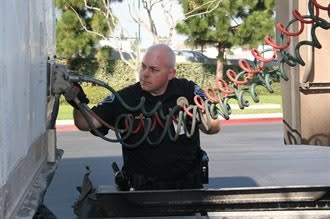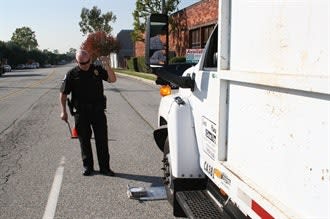For Craig Durling, the lead officer of the unit, enforcing violations on commercial vehicles comes with a responsibility to educate violators on what they're doing wrong to prevent repeat violations and keep other motorists safe. Giving out a citation just to give out a citation, or for a citation's revenue, is never the goal.
"I never want to send a violator away without him or her having an understanding of what the violation was," Durling says.
"I've never let the fines drive me. I'm looking to make my streets safer by helping commercial vehicle drivers and owners do their job as safe as possible," he adds.
Durling submits his citations to the court and leaves the fines to them. None of the revenue from traffic citations, commercial or otherwise, goes directly to the Torrance PD. Only a small portion of the revenue goes into the city's fund, and the rest goes to the state.
The two-officer unit is primarily responsible for identifying and focusing enforcement on problem locations and situations involving commercial vehicles. Durling says the unit is open to any officer who has graduated from his or her probationary period. An interest in traffic enforcement is a must, and a certification course from the California Highway Patrol must be taken. He says the training never ends since regulations are always changing. Any officer interested in joining the unit must be open to continual learning.














